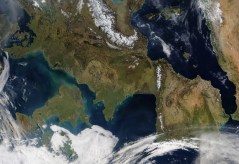Top 5 Fascinating Facts About Rocks, Minerals, and Crystals You Didn’t Know
Rocks, minerals, and crystals are more than just stunning natural formations; they are vital components of our Earth’s geology and play significant roles in our everyday lives. Whether you’re a budding geologist or just someone who appreciates the beauty of nature, learning about these fascinating materials can be incredibly rewarding. Here are five captivating facts that you probably didn’t know about rocks, minerals, and crystals.
The Earth is Made Up of Three Main Types of Rocks
Rocks are categorized into three main types: igneous, sedimentary, and metamorphic. Igneous rocks form from cooled magma or lava (think granite or basalt), while sedimentary rocks like sandstone originate from the accumulation of sediments over time. Metamorphic rocks such as marble arise when existing rocks undergo changes due to heat and pressure. Each type tells a unique story about the Earth’s geological history.
Minerals Are Naturally Occurring Substances with Unique Properties
Minerals make up the building blocks of rocks and have specific chemical compositions and structures. There are over 4,000 known minerals on Earth. Quartz is one of the most abundant minerals found in the Earth’s crust, while others like diamond (which is also a crystal) have very distinct properties that make them rare and highly valued for their beauty as gemstones.
Crystals Have Unique Geometric Structures
Crystals form through a process called crystallization where molecules arrange themselves in an orderly geometric pattern as they solidify from molten material or evaporate from solutions. This gives each crystal its unique shape—like the six-sided structure of quartz or the octahedral form of fluorite—making them not only beautiful but also interesting to study for their symmetry and internal structure.
Geodes Are Nature’s Hidden Treasures
Geodes may look like ordinary rocks on the outside but can reveal spectacular crystal formations within when broken open. These hollow cavities fill with mineral-rich water that deposits crystals over time—creating stunning interiors often filled with amethyst or quartz crystals that gleam in sunlight. Finding a geode can feel like discovering nature’s treasure chest.
Rocks Can Tell Us About Earth’s Past Climate
By studying rock layers (strata) through techniques such as radiometric dating, scientists can learn about past climates on Earth millions of years ago. Fossils found within sedimentary rock layers provide clues to what types of organisms existed during various periods—offering insights into how life has evolved alongside changing environments throughout geological history.
Rocks, minerals, and crystals hold endless mysteries waiting to be uncovered. By exploring these fascinating aspects further through collections or geology classes, you can deepen your appreciation for our planet’s natural wonders—and who knows what other amazing facts you might discover along your journey.
This text was generated using a large language model, and select text has been reviewed and moderated for purposes such as readability.






